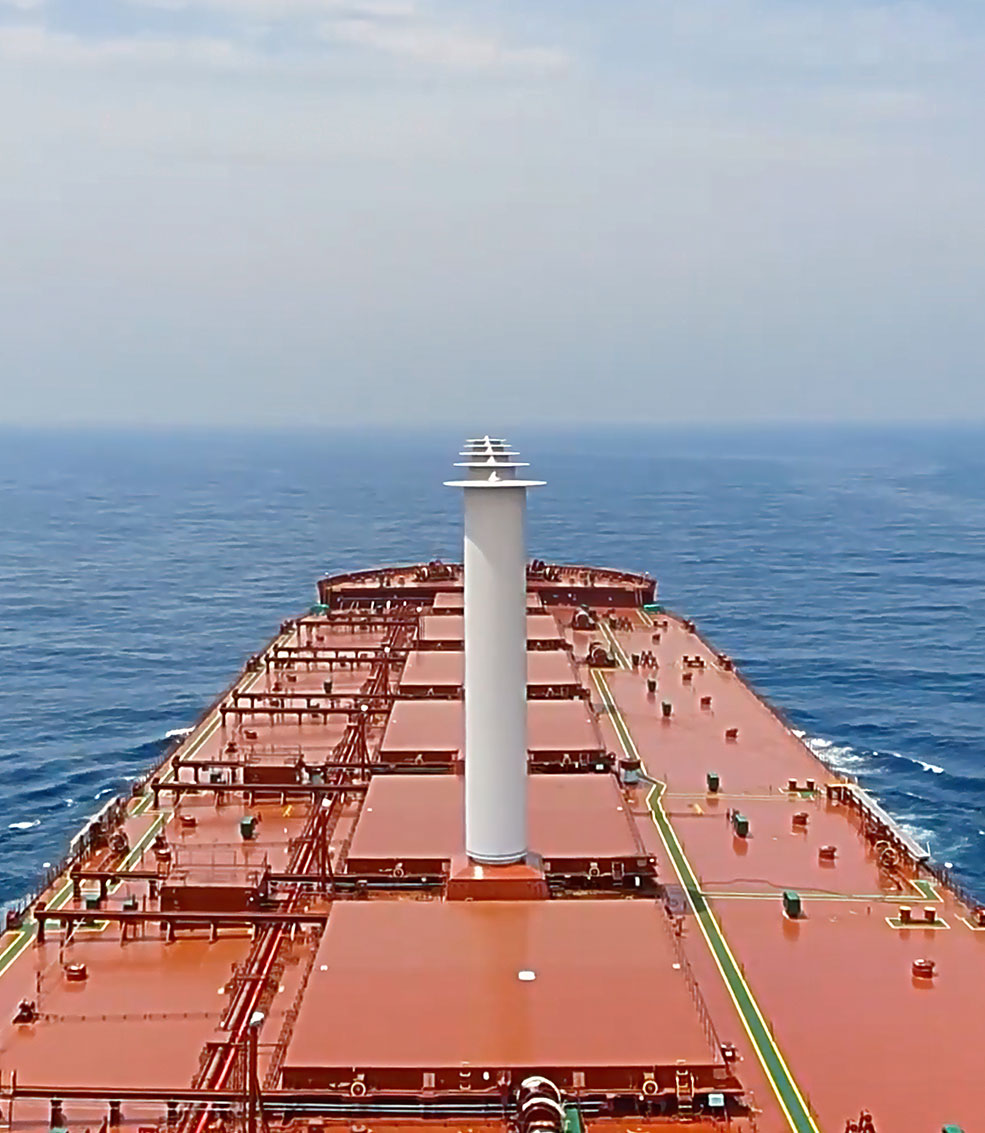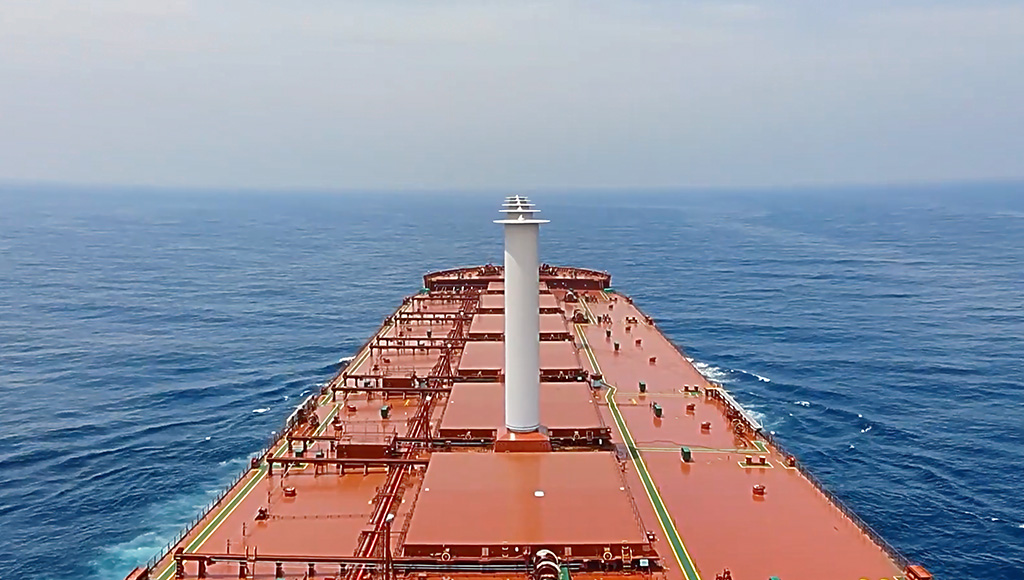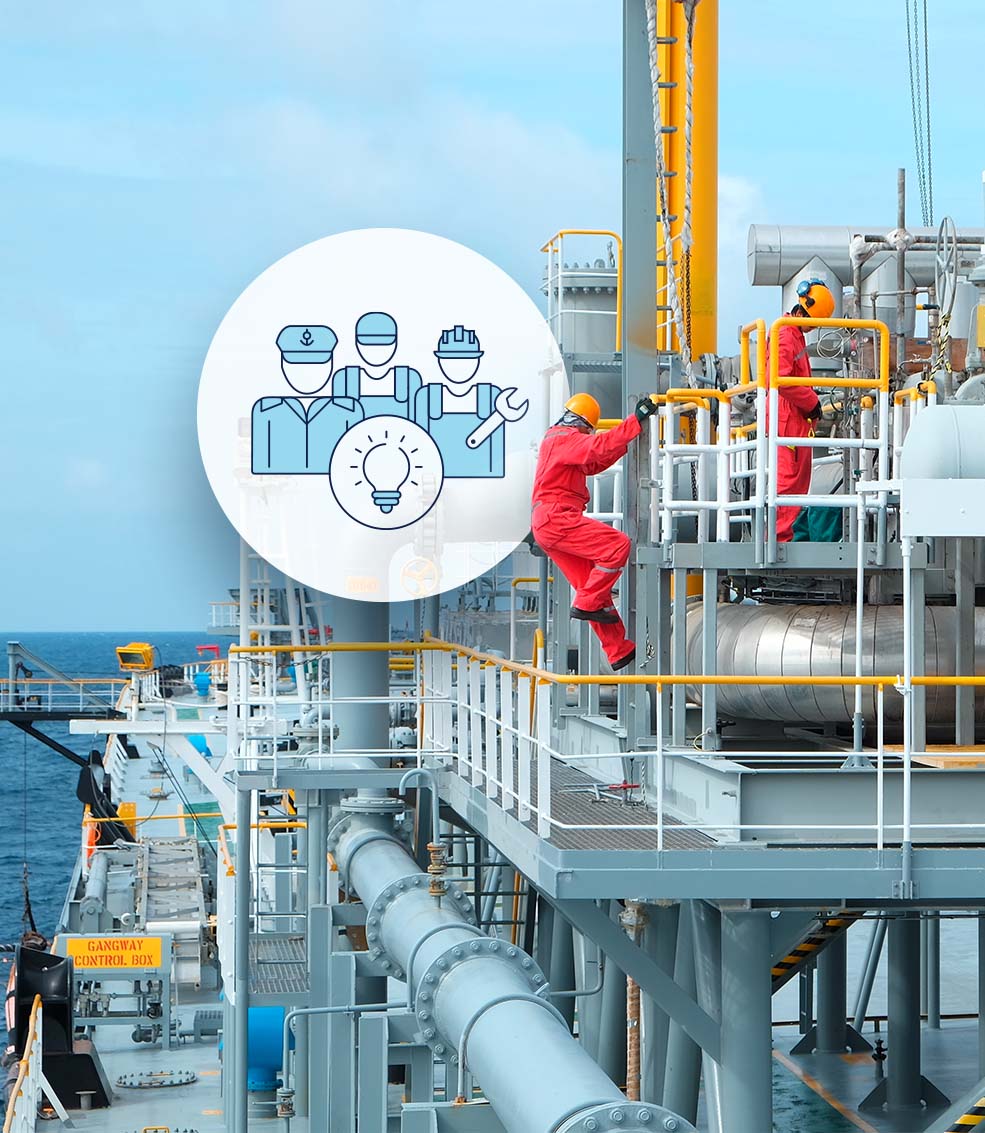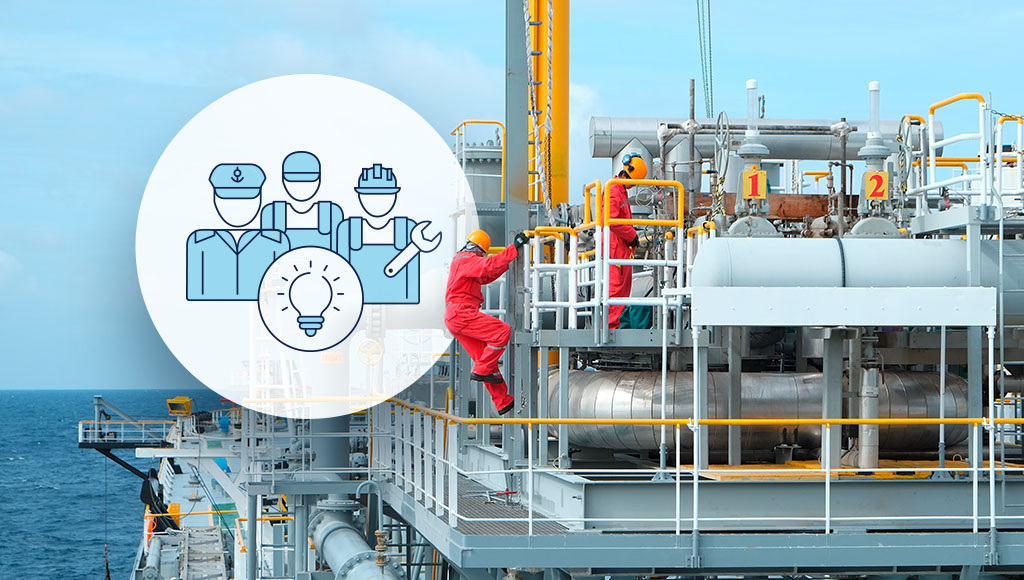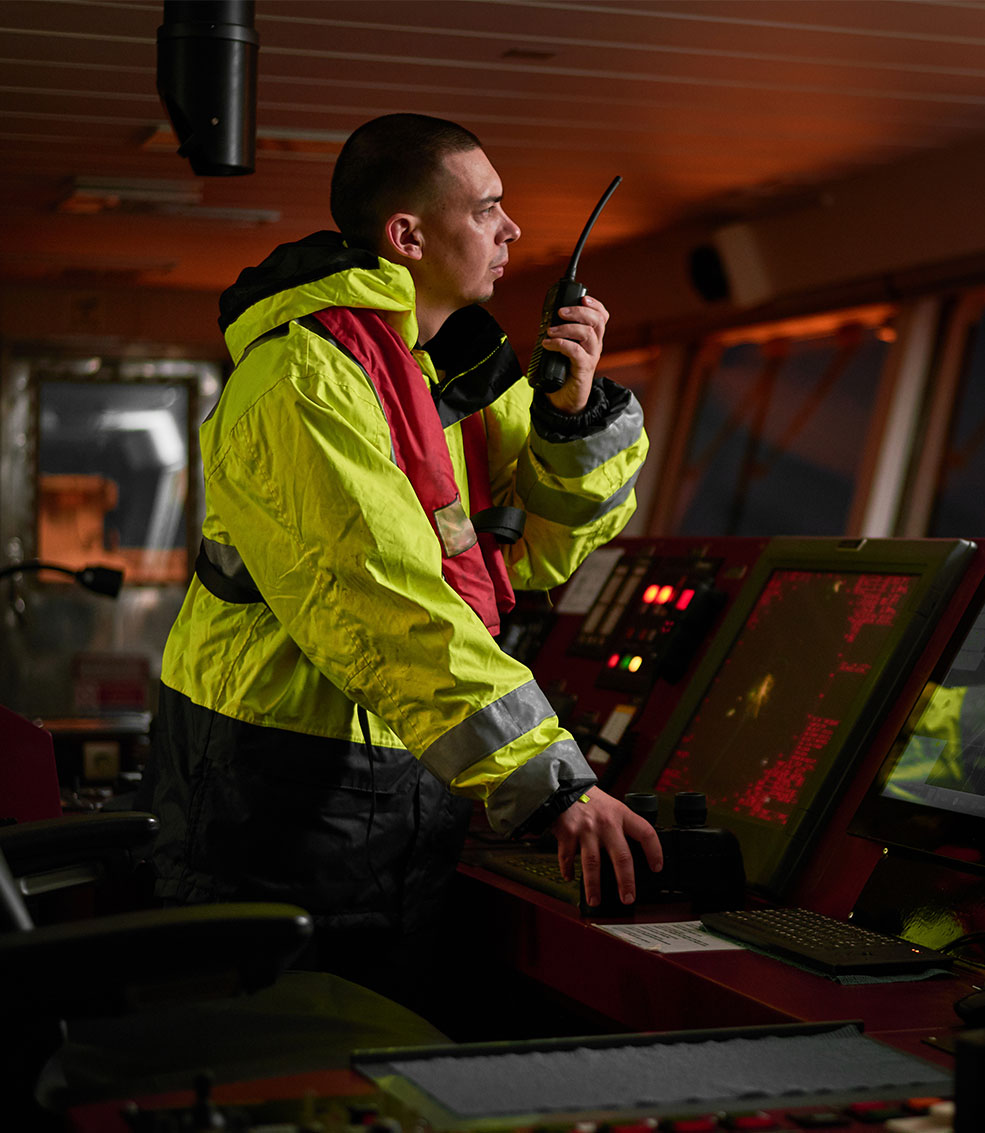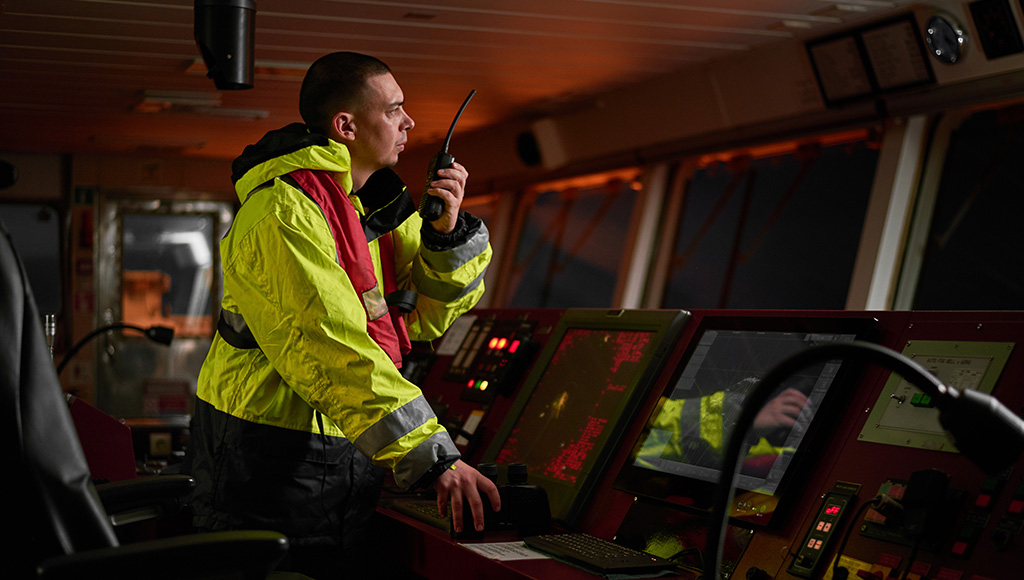- Industry Insights
- Decarbonization
Wind-assisted propulsion can cut fuel costs and emissions
IMO’s decarbonization plans are making wind propulsion attractive again. Advanced aerodynamics science in combination with computer technology has produced a number of technologies that do not require large crews and have demonstrated significant potential.
Start Slideshow-
11 Slides
-
17 March, 2020
-

The basic principle
Nearly all sail types use the same physical principle: the wind hits the leading edge of the sail, splitting into two separate flows which are redirected and travel at different speeds towards the trailing edge. The resulting pressure difference simultaneously pulls and pushes the sail and the craft forward. What has changed is the efficiency of sails, the materials they are made of, and their handling and control.

Rotor sails
转子帆利用所谓的马gnus effect: wind hitting a rotating vertical cylinder on board a moving ship from the side creates a forward pull. Advanced implementations of the technology used by several commercial vessels have enabled fuel savings ranging between 10 and 20 per cent. Today’s rotor sail technology can be considered as mature and economically viable in areas with adequate wind conditions. The available systems are computer-controlled, easy to use, and proven to withstand harsh conditions.

Rigid wing sails
Wing sails are modelled on aeroplane wings. Rigid wing sails have hard shells. Similar to the flaps on aeroplane wings, they sometimes consist of two or three parallel sections with hinged connections for adjusting the camber. Rigid wing sails have been used in racing for some time, notably in the America’s Cup. They are aerodynamically highly effective and can be operated automatically. Various concepts for applying the principle to commercial vessels exist but have not been implemented. When planning a rigid wing sail project it should be clarified whether any restrictions with regard to heavy weather and in-port operations should be considered.

Soft sails: DynaRig
The concept of the DynaRig was first implemented on the megayacht Maltese Falcon. Optically reminiscent of a square rigger, the system uses free-standing, rotating masts with rigid horizontal yards. These yards serve as guides for the sails, which roll up inside the masts when furled. A fully opened DynaRig forms a single, highly effective sail from the top of the mast to the bottom. The computer-controlled system can be operated by a single person. The concept is being actively marketed.

Soft sails
传统的年代ailing ships can benefit from contemporary materials and technology. In the mid-1980s the German engineer Peter Schenzle realized a sailing cargo ship using his Indosail soft sail concept. Maruta Jaya operated successfully in Indonesian inter-island trade, saving up to 50 per cent in fuel costs. Modern implementations of this technology can be valuable in areas with stable wind conditions. Recreated historic ship types have not been commercially viable, but modern sailing vessels occupy a successful niche in the cruise market, profiting from the romantic appeal of “windjammers”.

Soft wing sails
Soft wing sails combine the aerodynamic advantages of rigid wing sails with the low weight and flexibility of modern textile sail materials and can be reefed and furled. To overcome the complexities of controlling this sail type, recent developments use advanced sensor and software technology to fully automate the entire process of adjusting the sail position, camber and twist as appropriate for the heading and wind conditions. Practical experience of the OceanWings design on yachts has been positive. The technology is commercially available for cargo vessels as well.

Ventilated foil systems
This sail type features an oval-shaped, rigid columnar body that can pivot around its vertical axis similar to other hard sails. A strong fan inside this body sucks in air through the perforated downwind side of the shell to increase the pressure difference between the upwind and downwind sides, increasing the forward pull on the ship. Early systems installed by Cpt. Jacques Cousteau and others on several vessels produced encouraging results.

Kites
Kites for ships make use of the higher wind speeds and steadier, less turbulent wind conditions at greater altitudes. Kite rigs for commercial ships have only been tested on two ships to date. These very large kites are inflatable and require an on-board launching and recovery system as well as a control system. Initial trials succeeded in demonstrating the energy-saving potential of the technology, and technical advancements are attracting new attention among leading ship operators.

General considerations for wind-assisted propulsion
- The wind conditions specific to the intended operating sea region or route must be taken into account . - Wind propulsion ideally requires a free deck area. Car carriers, bulk carriers, tankers, ferries and ro-ro ships are well-suited, especially at low speeds. Containerships are unsuited. - Current cargo vessel hull forms are suitable for rotor sails, kite rigs and limited sail surfaces. - Ships with tall masts and a large sail surface area require special hull designs. - Weather routing should seek out favourable wind conditions.

DNV GL services and certification for wind propulsion
- Prediction of the auxiliary propulsion power or fuel savings a specific wind system will generate on a given ship and route . - EEDI calculation for a specific hybrid propulsion configuration including wind assistance. - Technical certification and approval of the safety, structural integrity and resilience under normal and extreme conditions of a ship using auxiliary sails.

A new standard and class notation
Typical applications of DNV GL’s new class notation “WAPS” and Standard ST-0511 for the certification of wind assisted propulsion systems include: - Rotor sails - Rigid wing sails - Soft wing sails - Soft sail systems - Ventilated foil systems
Get regular maritime industry insights!
Join thousands of industry leaders today who have already signed up to receive the latest insights.
sign up